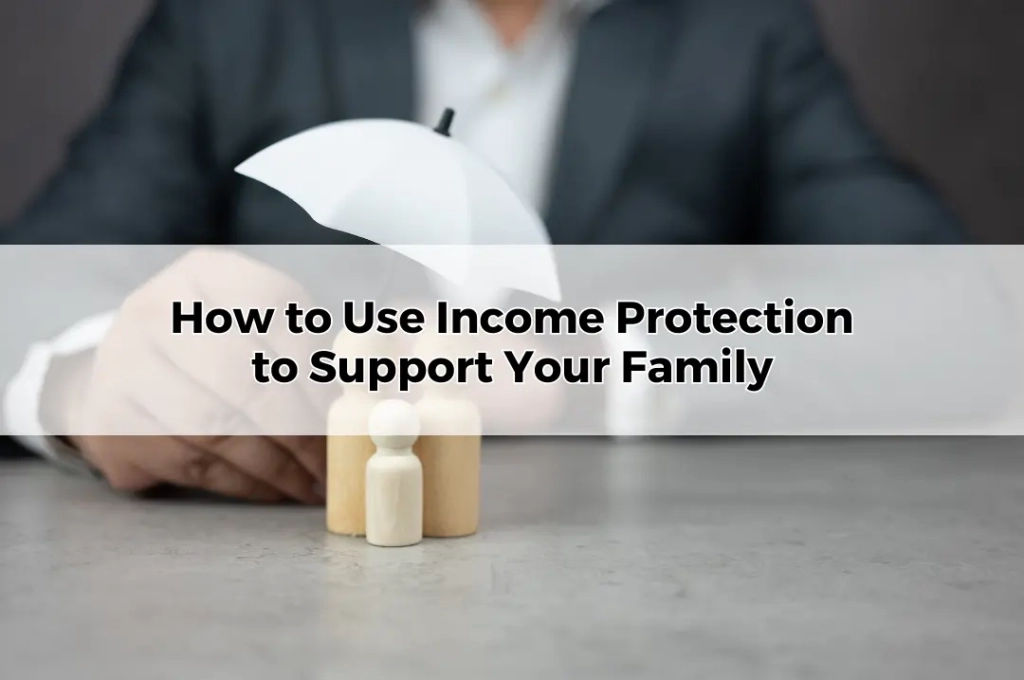How to Use Income Protection to Support Your Family
Table of Contents
ToggleIncome protection is a vital component in the financial stability blueprint, especially for households. It provides an income stream when illness or injury renders an individual unable to work, effectively preserving the lifeline of a family’s day-to-day finances. Unlike many insurance forms that focus on future security, income protection supports individuals and their families here and now by replacing a portion of pre-tax income during periods of incapacity. It’s an unsung hero in the Australian insurance landscape, offering working Australians the means to sustain their standard of living through unpredictable hardships. This type of insurance empowers individuals to focus on recovery without the added stress of immediate financial concerns, an essential benefit often overlooked in family financial planning.
Why Income Protection Matters for Australian Families
For Australian families, income protection is more than a contingency plan—it’s a shield against economic disruption. Imagine the impact of an unexpected illness or injury on a household’s income. When primary earners find themselves temporarily out of work, income protection ensures they don’t have to drain savings or rely on high-interest debt to meet expenses. This form of insurance stabilises family finances, providing breathing room to maintain housing payments, educational costs, and everyday necessities. In essence, income protection is an investment in peace of mind. It offers families the assurance that, despite unforeseen health challenges, they won’t compromise their financial standing or sacrifice long-term financial goals.
How Income Protection Works
Income protection insurance functions through a system of regular premium payments, whereby policyholders receive a monthly benefit if they become unable to work due to illness or injury. Typically, policies cover up to 75% of pre-disability income, providing a valuable buffer that ensures basic needs are met. Understanding how premiums and benefits are structured is essential. Premium costs vary based on coverage amounts, age, occupation, and health status, among other factors. Policies also come with a “waiting period” before benefits commence and a “benefit period” determining the length of time payments are provided. By grasping these elements, individuals can select policies tailored to their specific needs, ensuring income protection is a cornerstone of their family’s financial resilience.
Types of Income Protection Policies
Income protection policies come in various forms, each catering to unique circumstances. Two primary types are indemnity and agreed value policies. Indemnity policies base benefits on current income, providing flexibility for those with fluctuating earnings, such as contractors or freelancers. Conversely, agreed value policies guarantee a predetermined benefit, useful for individuals seeking certainty and consistency in their coverage. When choosing a policy, understanding these types can greatly enhance a family’s financial security. Indemnity policies are often less costly and adaptable, whereas agreed value policies may offer superior stability. Selecting the right type based on employment type and income predictability can make all the difference in maintaining financial stability during challenging times.
Eligibility and Coverage
Income protection eligibility is generally extended to individuals in regular employment who can substantiate their income through financial records. Most policies cater to full-time and part-time workers, with provisions for self-employed individuals. Some professions, however, face exclusions due to occupational risks, which can affect eligibility or require specialised policies. The age range for coverage also varies, typically between 18 and 65, with premiums adjusted for age and health. Families considering income protection should evaluate eligibility criteria carefully, ensuring that chosen policies accommodate their work arrangements. When seeking coverage, transparency around health status and employment type can help identify a policy that offers a safety net suited to individual circumstances.
Customising Coverage for Individual Needs
One of income protection’s most valuable features is its customisability. Policies can be tailored to reflect income levels, occupational risks, and family needs. This flexibility allows for adjustments in coverage amounts, waiting periods, and benefit lengths, effectively balancing financial needs against premium affordability. For instance, families can increase coverage to meet their expenses while selecting a longer waiting period to reduce premiums. This personalised approach ensures that income protection is not a one-size-fits-all solution but rather a nuanced tool that provides peace of mind. Families should consult with advisers to assess the best fit, aligning coverage with specific lifestyle needs and risk tolerance.
Calculating Coverage Amounts
Determining the appropriate coverage level is a critical step in securing financial stability for one’s family. Families should consider essential outgoings, including mortgage payments, utilities, schooling, and day-to-day expenses, while also factoring in potential medical costs during recovery. Coverage should ideally reflect 75% of income, offering a close approximation of take-home pay. By reviewing monthly expenses and existing savings, families can better ascertain the coverage required to sustain their lifestyle without stretching their budget on premiums. Carefully calculating coverage minimises both the financial strain of incapacity and the risks associated with over-insurance, striking a balance that supports family well-being.
Income Protection Waiting and Benefit Periods Explained
The waiting period refers to the time between a claim and the commencement of benefit payments, ranging from 14 days to two years. The benefit period, on the other hand, is the maximum duration for which payments are made, often between two years and retirement age. Shorter waiting periods bring quicker relief but result in higher premiums, while longer periods reduce costs. Benefit periods similarly affect premium levels, with shorter durations suited to those who anticipate a return to work sooner. Families should assess their financial reserves to select suitable periods, considering factors like savings, job security, and recovery prospects.
Balancing Premium Costs and Coverage
Balancing the cost of premiums with the level of coverage involves strategic planning. Premiums increase with higher coverage amounts, shorter waiting periods, and extended benefit durations, making it essential to find a sustainable equilibrium. Families can manage costs by opting for stepped premiums, which start lower but increase with age, or level premiums, which remain constant. Examining payment frequency and deductible options also offers room for adjustment, helping families tailor policies to fit budgets without sacrificing necessary coverage. This balance is key, as affordability ensures families maintain their protection plan long-term, securing financial support when it’s needed most.
Income Protection vs. Life Insurance
While both income protection and life insurance safeguard families, they serve distinct purposes. Income protection provides a temporary income stream during illness or injury, whereas life insurance offers a lump sum to beneficiaries upon death. Income protection supports a household’s immediate financial needs, while life insurance addresses longer-term concerns like mortgage clearance or future expenses for loved ones. Choosing between them depends on individual risk factors and financial objectives. Families might consider both policies to ensure comprehensive coverage across different scenarios, enhancing financial resilience through a multi-layered approach.
Tax Implications of Income Protection in Australia
Income protection premiums are generally tax-deductible, making them an attractive investment for Australian households. Unlike other personal insurance types, income protection offers this advantage, reducing taxable income and offsetting premium costs. However, any benefits received are considered assessable income, subject to taxation. This arrangement offers families the immediate advantage of premium deductions while requiring them to plan for future tax liabilities. By consulting with a financial adviser, families can better navigate these implications, structuring policies in a tax-effective manner that aligns with their financial objectives.
How to Choose the Right Policy
Selecting an income protection policy can be overwhelming. Families should consider a series of targeted questions, such as: What is the waiting period? What benefit period aligns with my work prospects? Are premiums affordable long-term? By comparing providers and evaluating policy terms, families can choose policies that best reflect their needs. Examining exclusions and additional features, such as indexation and rehabilitation benefits, further refines policy selection. These questions guide informed decision-making, ensuring families choose the right balance of coverage, cost, and benefits to support financial resilience.
The Role of an Online Financial Adviser in Income Protection Decisions
An online financial adviser can simplify the complex process of selecting income protection, offering convenience and expert insights. With comprehensive knowledge of policy nuances, advisers assess needs, compare policies, and provide personalised recommendations. Engaging with an online adviser ensures families are aware of all available options, even from the comfort of home. This modern approach allows individuals to tailor financial plans without geographical limitations, making expert advice accessible across Australia. Online advisers not only provide a clearer understanding of options but also streamline policy implementation, making income protection a seamless part of family financial planning.
Long-Term Benefits of Income Protection for Retirement
Income protection is often seen as short-term support; however, its benefits extend to preserving retirement savings. Without this coverage, families might deplete retirement funds to cover expenses during periods of incapacity. Income protection safeguards these assets, ensuring they remain untouched for future use. As such, income protection is an investment in both current stability and long-term financial health, protecting superannuation balances and investment portfolios. By maintaining income continuity through income protection, families can secure a more comfortable retirement, effectively using this tool to bridge the gap between active earning years and future retirement needs.









